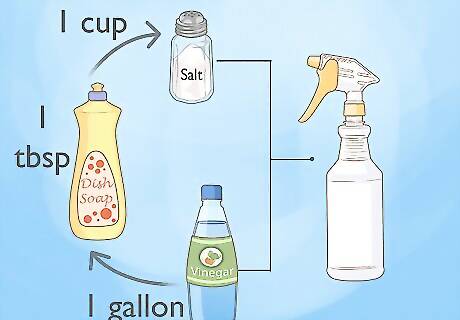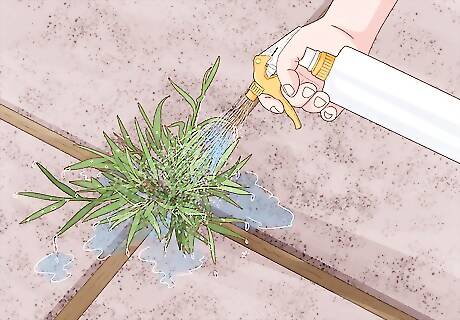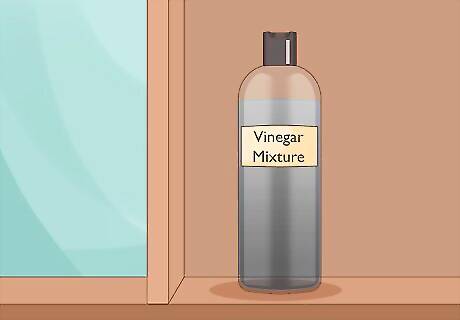
views
- Combine distilled white vinegar, salt, and liquid dish soap in your garden sprayer or a spray bottle. Use horticultural vinegar for additional strength.
- Spray the leaves and stems of the weeds with your solution on a calm sunny day.
- Reapply the vinegar solution every 2–3 days until the weeds die out.
Mix vinegar, salt, and dish soap in a sprayer.

Adding salt and dish soap makes vinegar even more effective. Add 1 gallon (3.8 L) of distilled white vinegar that you have in your kitchen to your garden sprayer. Stir in 1 cup (273 g) of table salt and 1 tablespoon (15 ml) of dish soap until they’re thoroughly mixed. The added salt dries out the leaves even more, and dish soap helps the solution stick to the weeds. Fill a spray bottle if you don’t have a lot of weeds to kill. If you don’t have one, make your own with a glass bottle and spray nozzle. Standard vinegar usually has 5% acidity and works best for weeds that have appeared in the last 2 weeks. Use horticultural vinegar with 30–45% acidity to get rid of more established weeds. Just wear safety glasses and gardening gloves to protect yourself.
Spray the weeds in the morning on a sunny day.

Applying in the morning lets the vinegar soak into the leaves all day. Check the forecast to see when the next clear day is and plan on applying your weed killer then. Try to go out in the morning to spray since there’s usually less of a breeze and you’re less likely to contaminate other nearby plants. Avoid spraying weed killer when it’s supposed to rain since it could rinse off the vinegar before it gets rid of the plant.
Spray the vinegar mixture on the weeds.

Coat the leaves completely so the vinegar can soak in. Hold the spray nozzle as close as you can to the weeds you want to kill so you don’t accidentally spray other plants you want to keep. Simply pull the trigger on the sprayer or spray bottle to coat the weed with the solution. Continue spraying all of the weeds you want to get rid of. Vinegar works best for weeds that are growing in sidewalks, driveways, or away from other plants since it can easily kill grass and other plants nearby. If you can, adjust the spray nozzle so it shoots a steady stream of the vinegar solution rather than a mist. A mist can easily blow away and get on other vegetation.
Reapply vinegar in a few days if the weeds don’t die.

It may take multiple applications to fully kill stubborn weeds. Vinegar kills most young weeds within 24 hours, so check the area you sprayed during the next 2–3 days to see if they wither away. If the weeds are still standing tall or developing new growth, coat them with more of the vinegar solution. Keep checking and spraying the weeds until they completely die out. Vinegar may kill the leafy greens of perennial weeds, like dandelions or crabgrass, but it won’t reach the roots and plants may come back again the following season.
Store the leftover solution in a labeled jug or bottle.

You can keep and reuse vinegar as a weed killer each year. Empty your garden sprayer into a clean container with a lid and seal it tightly. Write “vinegar weed killer” or something similar on the side of the container so you don’t forget what’s inside. Store the container in a cool, dry place where you can easily access it whenever you need to spray weeds again. Be sure to clean your garden sprayer so the vinegar doesn’t cause any damage to the components. Avoid keeping horticultural vinegar in your kitchen so you don’t accidentally use it in your cooking.
Pull stubborn weeds by hand.

Pulling weeds by hand ensures you don’t damage nearby plants. If you want to get rid of weeds without killing your lawn, then pull them instead. Pinch the base of the weed’s stem between your fingers and slowly pull the roots out of the ground. Make sure you get all of the roots so the weeds don’t grow back. If you aren’t able to pull the weeds by hand, dig them out with a trowel.




















Comments
0 comment